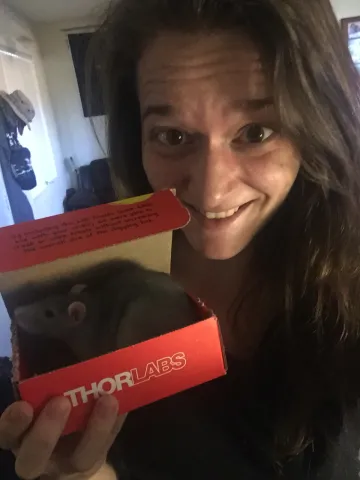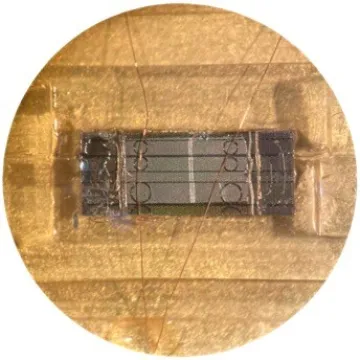Another Wavelength: Shelbi Jenkins

This week in Another Wavelength, we chat with 5th year Ph.D. Student Shelbi Jenkins. Shelbi is advised by Professor Bob Norwood. Pictured below is Shelbi with her rat, Hermes!

Where are you from?
Anchorage, Alaska
What brought you to study optics?
A combination of general disarray in my life post-high school and being in the right place at the right time. My physics department in undergrad did a great job of selling the excitement of optics and laser ablation to me as a very impressionable 18-year-old. As it would turn out, I enjoyed it as much as they expected, and even came to be very good at it! So in the end, I have the Willamette physics department to thank for their excellent career matchmaking skills.
Who is your hero in science?
I could never narrow down my inspiration to one person. I survive in optics through constant admiration of my friends, support and guidance from my coworkers, and the second-hand ambition I’ve harvested in seeing others triumph and excel in this field, whether they were aware of their influence or not. My real heroes through all of this are the moments of collaboration and comradery that remind me I am not alone.
Describe your research in 20 words or fewer.
I work to integrate magneto-optic materials into silicon photonics devices and systems for communications and sensing applications.
Describe your research in 200 words or fewer.
Using magnetic nanoparticles as high verdet constant materials, I explore advances in on-chip silicon photonics devices such as modulators, sensors and interferometers. We have demonstrated verdet constants on the order of 106 °/Tm with promise of producing even higher verdet materials by increasing the nanoparticle size and loading. By integrating the high verdet materials to fine-tuned and highly responsive structures such as resonators, or Mach-Zehnders, we can better functionalize the magneto-optic response of the materials. My work has primarily focused on designing, fabricating and testing novel magneto-optic modulators. Preliminary results show that an extinction ratio of ~5dB is possible for low frequency applications. Future work includes tuning the modulator performance through material selection and further characterizing the validity of these devices in high frequency communications applications.

Name three neat facts about you.
- When I was a child I once caught a salmon with my bare hands – in case anyone ever doubts that I am a true Alaskan.
- My favorite story genre is anything with a nonlinear timeline. If there is time travel or if the story is told out of order, then please recommended it to me. I love being confused.
- One of my biggest inconveniences in life is my inability to accurately estimate length, weight or time.
Research Caption: Packaged magneto-optic modulator
